Sedum caustic: description, planting and care
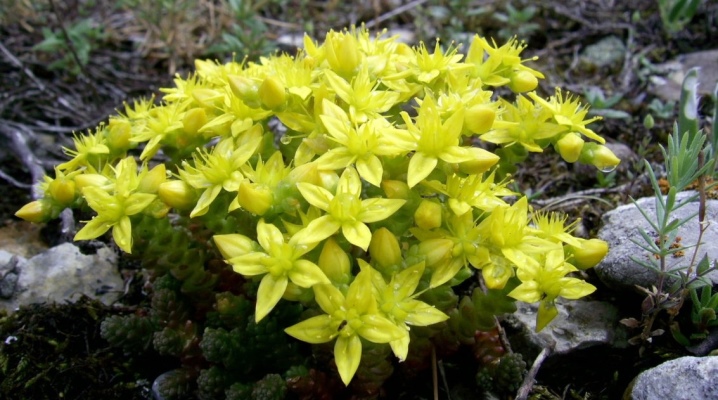
Used in landscape design, the flowering plant sedum (sedum) is able to decorate even a rocky surface, add bright colors to it, and become an unusual accent in the design of the local area. Its unusual appearance makes it very decorative.
The description of the sedum plant directly indicates its belonging to the succulents that do not require complex care. From late spring to mid-summer, the use of a yellow flower in landscape design allows you to correctly place accents and add colors to the space. But what is known about this plant?
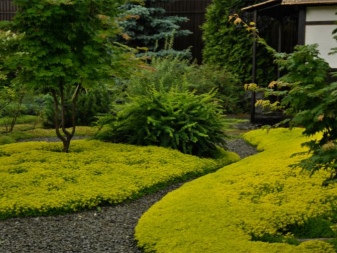

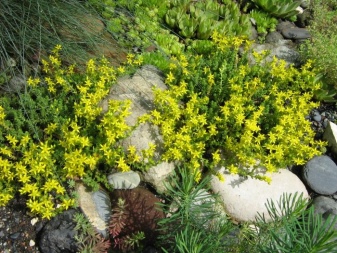
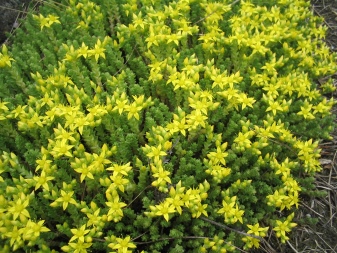
How are planting and caring for caustic stonecrop carried out? What breeding methods does this creeping perennial support? How is it used in landscaping and with which plants does sedum work best? These issues should be considered especially carefully, because with proper care and placement, sedum can become a real treasure for any grower.
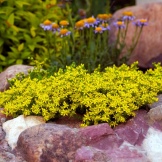
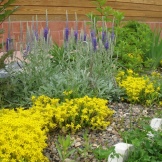
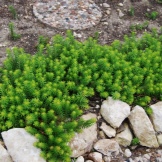
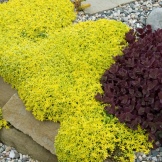
Features and distribution
Sedum acre - this is how the botanical name of the plant sounds in Latin. In the wild, it is found in different climatic zones. Sedum grows in North Africa, western Siberia, in many regions of Europe and Asia. In Russia, it can also be found everywhere, it is enough to pay attention to the vegetation in the area of rocky relief in open areas.
This plant needs an abundance of sunlight and dry loose soil, does not tolerate damp, swampy or shaded places.


The description of the caustic stonecrop is consistent with its name. This succulent has strongly branching roots that go deep into the ground, the surface of the bush is compact, about 10-20 cm high.Multiple fleshy stems cover thick ovoid leaves, the sedum blooms with bright yellow flowers resembling five-pointed stars. Sedum acre belongs to the category of medicinal plants containing alkaloids: it has a bitter, scalding juice that, in contact with the skin and mucous membranes, can cause tissue damage.
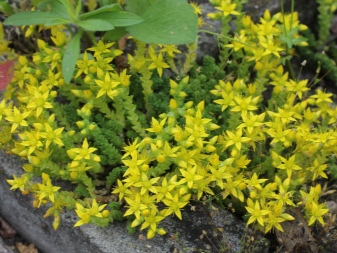
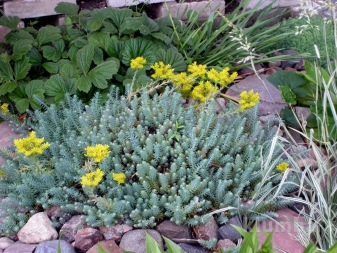
In nature, sedum grows crowded, forming real glades of bright colors. In a cultural planting it can be placed singly or as part of compositions. Most of the year, stonecrop adorns the area with lush greenery, has the ability to grow rapidly. The plant blooms from late May to July, sedum can be used as a melliferous plant due to the abundant secretion of nectar during the summer months.

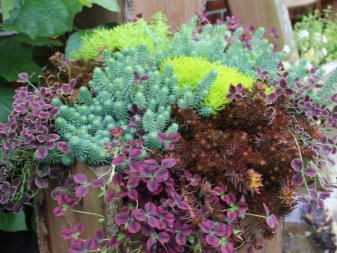
When growing sedum, it is very important not to plant it in the shade of other herbaceous or shrub crops. The plant is very sensitive to the amount of light it receives and, when shaded, does not get sufficient growing conditions for itself. It is worth considering that in the first years after planting, young bushes do not amaze with decorativeness, letting in most of their strength for rooting. Fruiting and blooming adult shoots at 3 years of age and older - by this time the sedum is sufficiently extended in height, and the volume of its deciduous mass decreases.
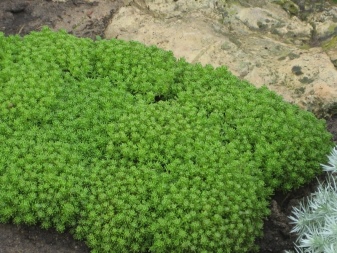
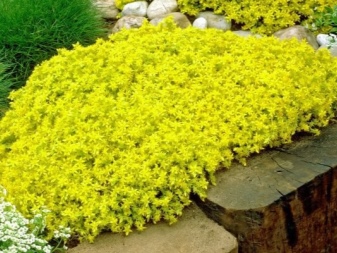
Stonecrop seeds on the ovaries ripen in August, when the fruits open, becoming like stars. The leaflet fruit has a light green tint; it can most often be found on plants in the rain or after it. Sedum caustic is well adapted to survive in almost any environment - its creeping rhizome can go deep into the soil or take moisture from the surface. The plant is considered a perennial, capable of hibernating without shelter, however, in severe frosts, it can lose individual shoots.

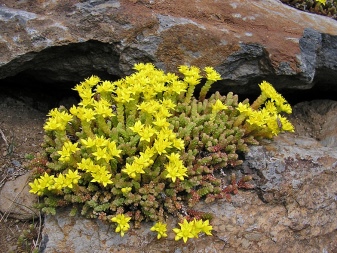
How to plant?
Planting sedum on the site always begins with the choice of a suitable place. This plant is quite light-requiring, it needs a place where it will receive enough ultraviolet radiation during the day. In the bright sun, sedum grows well, demonstrates the brightness of foliage, and abundantly forms buds. In addition, if you plant it in the shade, the flowers will lose their aroma, for which many gardeners love it so much.
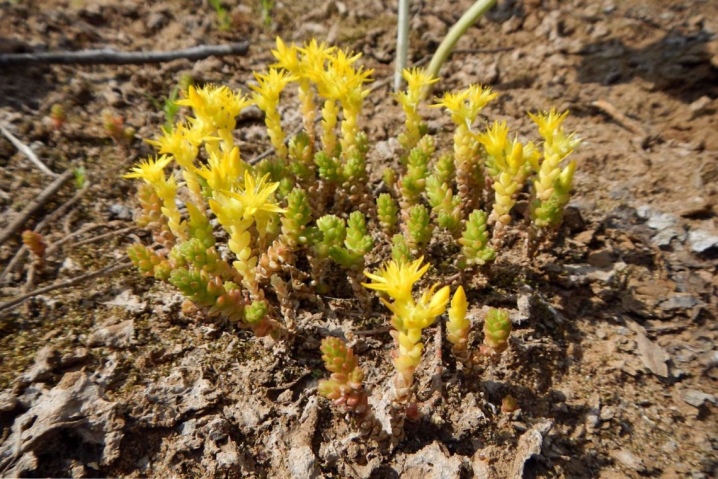
On the contrary, this species is unpretentious to the choice of soil and is able to adapt to the poorest soils in composition. Like other succulents, it thrives on rocky areas. It is optimal if the soil is loose enough. Sandy loam or loam is suitable, you can slightly enrich the soil by introducing ash and humus. On such a mixture, sedum will grow well and bloom profusely throughout the summer.
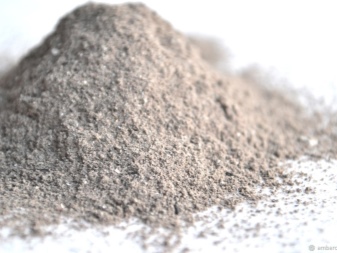
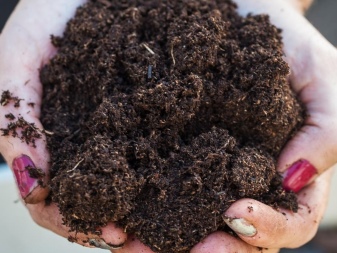
No fertilization required when planting. The exception is a small amount of substances of the potassium-phosphorus group. But you should not be zealous with nitrogen fertilizers - they stimulate growth, but significantly reduce the resistance of the shoots to diseases.
The planting process is simple, the roots of the plant are well adapted to any mechanical stress and are not afraid of them. There is no need to fear that they will be damaged during manipulation. When transferring sedum from a pot or container, it is very important to keep an earthen lump with the usual microflora. This will increase the survival rate, accelerate the adaptation of the culture to a new place. The best time for planting or transferring sedum is the warm season, spring-summer months, when the vegetation processes are as intense as possible.
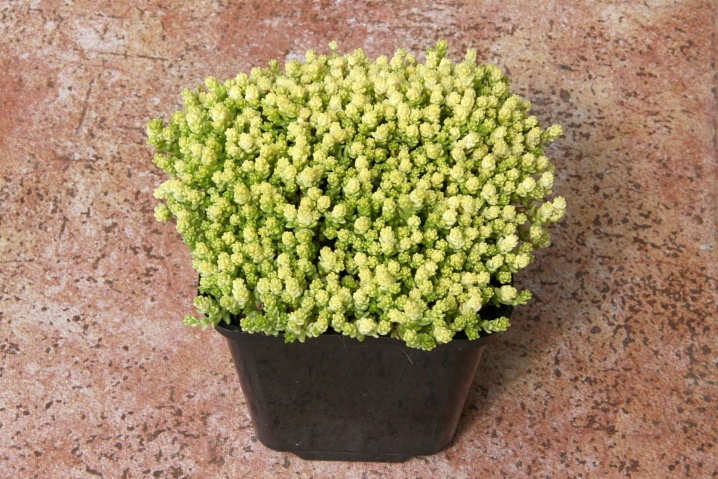
When planting, leave at least 25 cm of space between individual plants - this will allow the daughter shoots to grow well. The hole does not need to be dug deep, and its diameter should be slightly larger than the earthen clod. The bottom of the pit is well drained, sprinkled with a special mixture of soil for cacti or a self-prepared substrate, then a seedling is placed on it. The hole is filled with soil, watered.
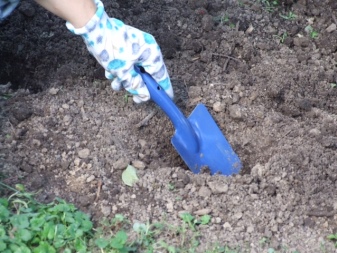
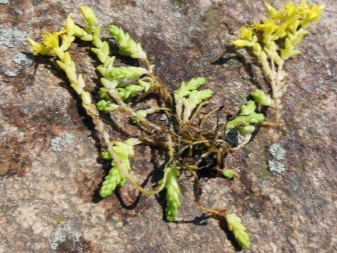
How to take care of it properly?
Sedum caustic is not too demanding for care, but it needs attention, especially for young plants. A special watering regime is established for them - more frequent and regular. The water requirement of sedum is determined by the degree of soil moisture. It should not be too damp, but the earth should not be allowed to dry either. In a mild summer, you can only change the rules during a long period of absence of rain.

Weeding is an indispensable part of good care for caustic stonecrop. This plant does not like it too much when the space next to it is occupied by the roots of weeds. Sedum requires frequent weeding to allow its roots to receive the required amount of nutrients from the soil.
Pruning faded shoots is another important step in caring for stonecrop. Such measures are taken in order to rejuvenate the bush, provide it with additional stimulation of growth and branching. During the dormant period, it is recommended to cover the plant with a film or non-woven material, which makes it possible to prevent freezing in the autumn cold.
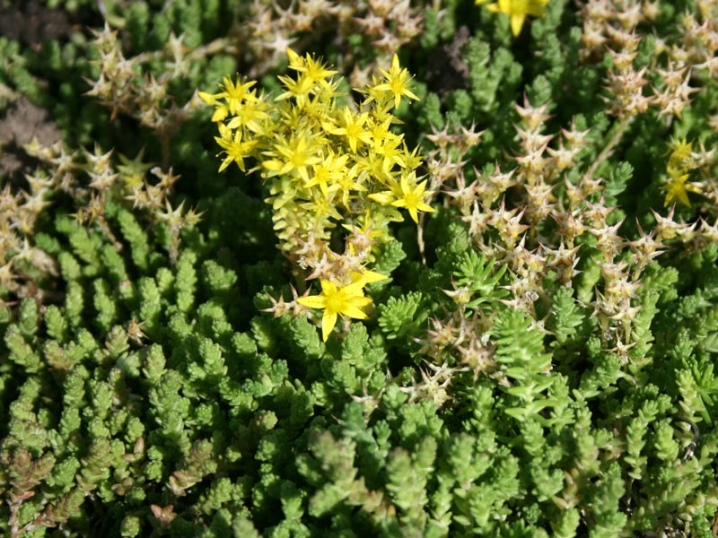
Top dressing of sedum is not done too often - it is enough 2 times a year. Such a regime is associated with the fact that with excessive fertilization, the succulent loses its natural resistance to atmospheric factors. As a result, even minor climatic changes can seriously harm him. The first fertilization is done before flowering begins, the second after flowering. The optimal nutrient composition is the combination of nitrogen with liquid manure, you can also use any other organic and mineral fertilizers.
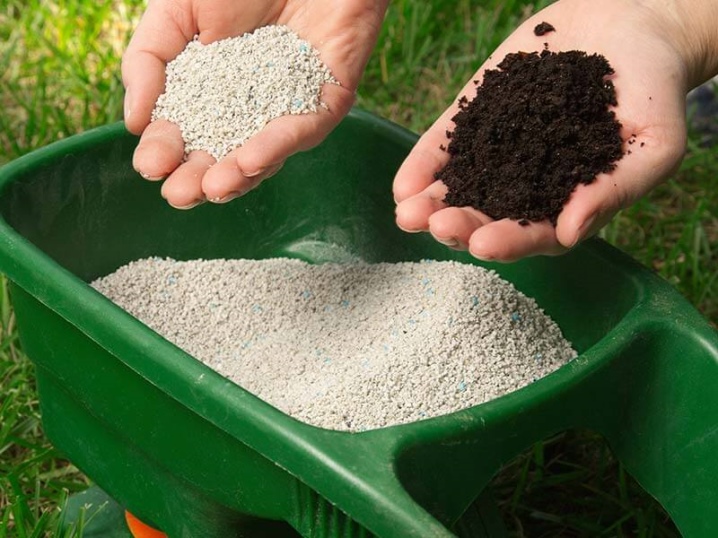
Reproduction methods
Sedum caustic can be propagated using several methods at once. Seeds it can be sown in 2 patterns. In the first case, in the third decade of April, the soil is prepared in the open ground, and then seeds are introduced into it. It is not necessary to deepen them strongly, it is enough just to sow over the plot and lightly sprinkle with a layer of sand.
Also, seeds for seedlings can be sown in advance. To do this, drainage is placed in the container, on top of it is a soil mixture of 1 part of garden soil, 1 part of sand and 2 parts of humus. Then the resulting soil is moistened and seeds are applied on top of it. They are kept under film or glass until shoots appear. Next, the mini-greenhouse is removed, the plants are kept on a well-lit windowsill, if necessary, prolonging the daylight hours with the help of lamps.
Seedlings that have already reached a height of 7 cm are planted in the ground.
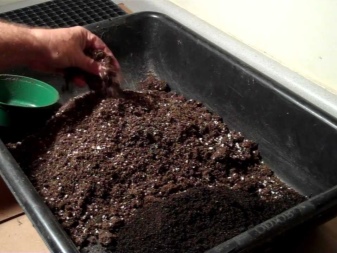
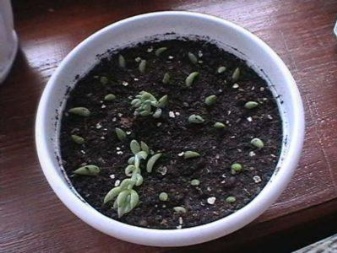
Cuttings - Another common method of propagation of sedum caustic. Any adult plant bush is suitable for the procedure for cutting shoots. A healthy and strong part of the branch is cut off, choosing a length of 5-7 cm, placed in the soil with a deepening of the base by 3 cm. Rooting will take at least 30 days. The cuttings are taken care of at this time as an adult plant.
Sedum needs a periodic transplant - every 5 years it is transferred to a new place on the site. The procedure is carried out in the spring, in April, and if you want to propagate the plant on the site, during this period you can divide the bush. It is carried out with a pruner or a garden knife. The areas of separation on the cuts are sprinkled with crushed activated carbon. The bushes are dried for several hours, then placed on the places chosen for planting.
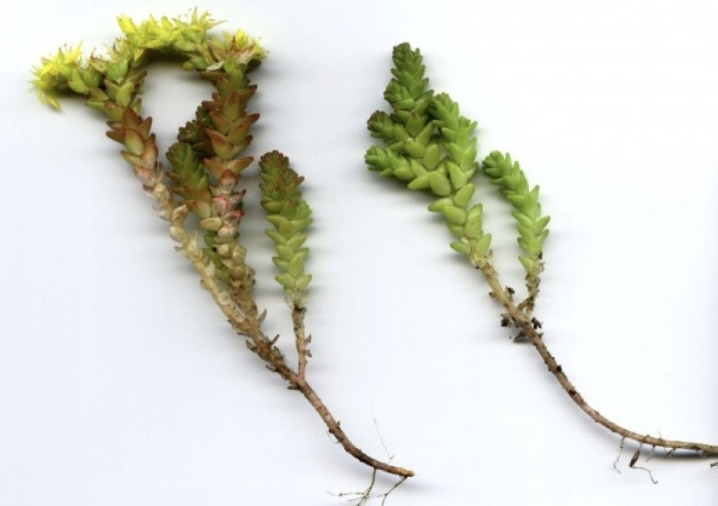
Diseases and pests
Sedum, when creating the right growing conditions for it, is quite resistant to the development of diseases. But insects often cause serious damage to him. Among the main enemies of caustic sedum, the following parasites can be noted.
- Nematodes. They attack the root of the plant and extract juices from it, disrupting normal vegetation. The finest microscopic worms are dangerous parasites and when they appear, measures must be taken immediately. If the shoots began to wither, turn pale for no reason, and when transplanting, swelling and neoplasms are noticeable on the roots, such a bush should be immediately destroyed, and nothing should be planted at the place of its growth for several years.
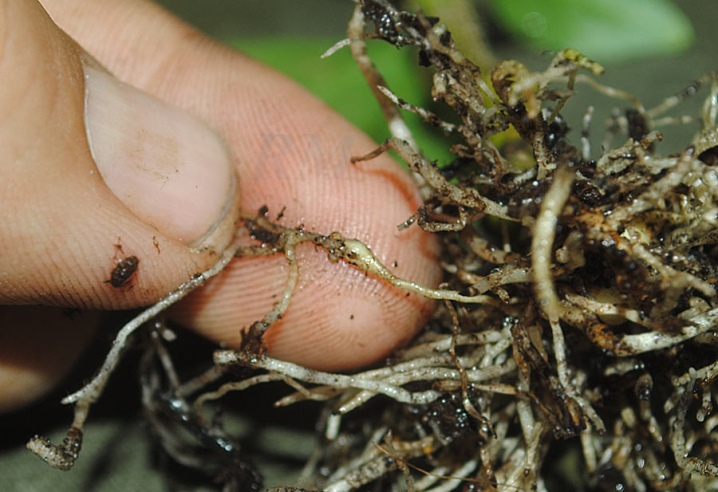
- Aphids and thrips. These insect pests are mainly interested in the surface of the plants. Upon detection of leaf deformation, perforation, characteristic tubercles on their back, it is recommended to conduct a more thorough examination of the sedum. If insects are present, insecticidal treatments must be performed.
Even spraying with a regular laundry soap solution can be beneficial, providing a sufficient effect with minor contamination.
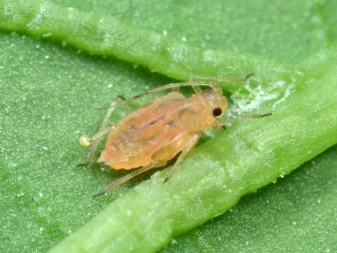
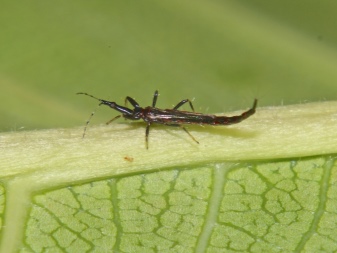
- Weevil. He is attracted by the leaves of stonecrop, which the insect can destroy almost completely. In the fight against pests, the best measure would be to use manual collection in a paper bag and then incinerate. This will make it possible to quickly destroy the weevil population when the succulent is processed twice during the day.
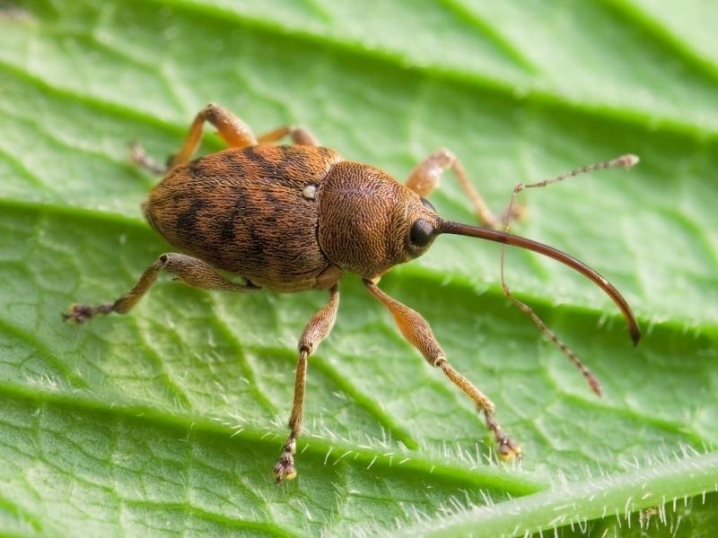
If watering norms are not observed, there is a high likelihood of development of caustic sedum fungal diseases. Various types of root rot affect the underground part of the plant and quickly lead to its death. To save the plant, you will have to prepare a new place for it and make a transplant, temporarily reducing the amount of watering. It will be useful to treat the roots and places of previous growth with fungicidal preparations. This will avoid contamination of other plants.

Use in landscape design
Landscape designers appreciate the decorative properties of sedum, noting its impressive appearance and excellent adaptability. The plant is easily combined with other species in low-growing compositions, but cascading plantings with taller garden crops are not recommended for it. At the same time, the sedum itself is located in groups so that during flowering it forms a full-fledged living carpet, densely covering the center of the lawn, rockery, alpine hills with yellow asterisk flowers.
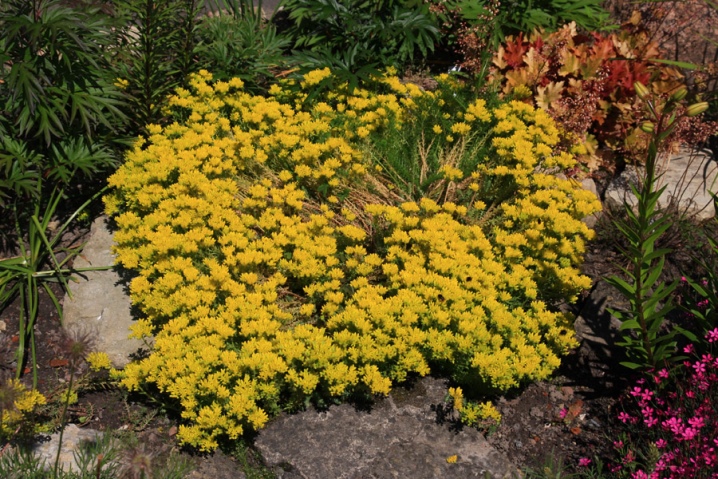
This succulent is also highly valued as a component of the design of a terrace or veranda. When planted in large flowerpots, containers can be used as a balcony decoration or placed on stairs. In flower beds near the house, it is customary to plant sedum bushes in the center, creating a bright border around them that does not violate the attractiveness of this natural plant.
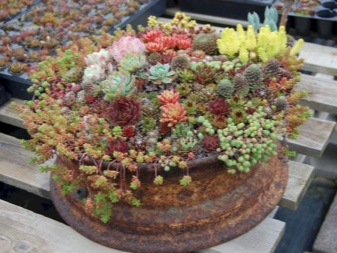
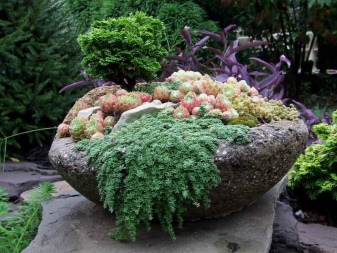
Actively growing sedum is a good solution for decorating the flaws of the gardener's work. Often they are covered with curb defects, occupy sites where it is difficult to plant other plants. This property is especially valuable, because the plant is suitable for growing even for those who are just starting to master the decoration of the garden landscape.
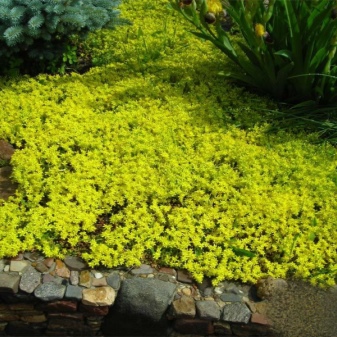
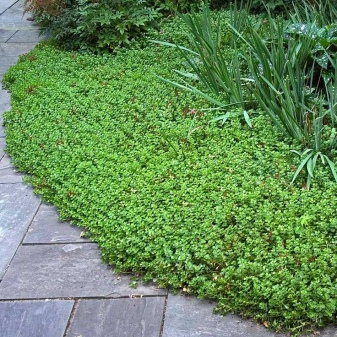
The next video will tell you about the varieties and intricacies of stonecrop care.






































































































The comment was sent successfully.